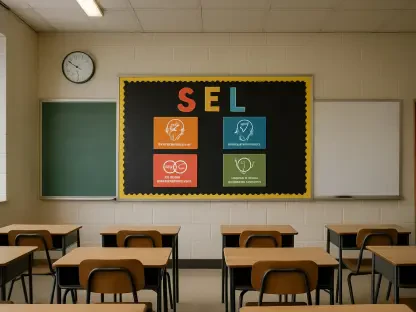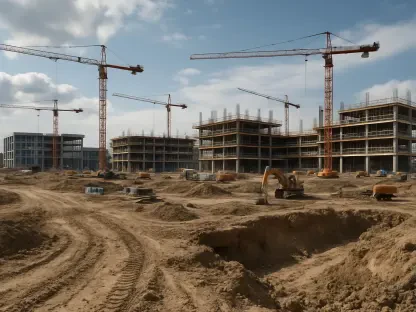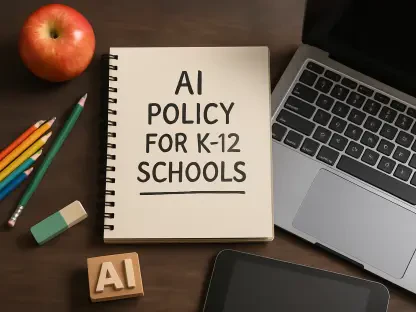The closure of the Winnipeg School Division’s Virtual School marks a significant turning point in the broader discussion about virtual education’s role in post-pandemic Canada. Initiated to serve students in Grades 9 to 12 during COVID-19, the program was discontinued in 2024 due to high operational costs, totaling about $1 million annually, and diminishing enrollment driven by interest outside its primary jurisdiction. This decision prompts a multifaceted conversation regarding the practicality and efficacy of virtual schooling in a world progressively returning to pre-COVID educational norms. The narrative underscores the evolving priorities and diverse needs of students who once benefited from remote learning options, highlighting ongoing debates about the advantages and limitations of virtual education.
Evaluating Post-Pandemic Educational Priorities
The Return to Traditional Schools
In Manitoba, the recent cessation of the Virtual School program has opened discussions about evolving educational priorities in a post-pandemic world. A significant aspect of this decision relates to perceived benefits of in-person learning for social development and community integration. Provincial education officials have strongly advocated for students returning to physical classrooms, emphasizing socialization and community involvement as key elements missing from fully digital environments. The in-person setting continues to be valued for its ability to foster interpersonal skills and collaboration, which are critical components of students’ holistic development.
However, this shift back to traditional learning does not come without opposition. Families, such as Sarah Smith’s, argue against the closure, pointing out the benefits of virtual learning environments—especially for students with specific health needs like her child. These families express concerns over missed opportunities for those requiring flexible, non-traditional schooling options, based on health vulnerabilities or personal learning preferences. Such circumstances highlight the continued importance of remote learning alternatives, offering unique educational experiences absent from the conventional classroom model.
Diverse Needs and Virtual Schooling
The decision to end the Virtual School has drawn attention to the varied needs of students who thrived under the online learning model. Sarah Smith’s standpoint reflects a broader discussion about harnessing educational avenues that accommodate diverse learner profiles. Virtual schooling, despite hurdles such as the need for self-discipline and continuous engagement, offered students unique independence, often prompting debate on its viability post-pandemic. This educational format is particularly valuable for students with medical conditions—as seen with Smith’s child—and those who prefer independent learning environments.
While some critics argue that virtual education might not sufficiently address young learners’ emotional and academic requirements, proponents stress its adaptability for unconventional students. Online platforms have proven essential for many families during the pandemic, offering alternatives that match individual learning styles. This discussion unveils an ongoing quest to innovate and refine educational frameworks, incorporating online strategies that address specific family needs without compromising on educational integrity.
Technological Transition in Education
The Evolution of Digital Literacy
The closure of the Virtual School doesn’t signify the end of the digital education era in Manitoba; rather, it marks a transition toward integrating technology into traditional classroom environments. Post-pandemic shifts have broadened digital tool utilization, with platforms like Google Classroom and Microsoft Teams enhancing educational resources. Such advancements signal progressive educational methodology, integrating technology seamlessly with conventional practices to elevate learners’ digital literacy. Students and teachers now increasingly incorporate these tools, fostering a digitally literate culture in schools across the province.
This transition indicates a developing trend where digital literacy is no longer limited to online-only education models but is actively shaping traditional schooling methods. Richard Roberts, an expert in educational technology, illustrates this trend as a progressive shift toward achieving high digital fluency, making tech integration both an educational strategy and a tool for broader academic advancement. Roberts’ insights reveal how such technologies have expanded learning capacities, offering inclusive platforms for students to engage actively with monitors and peers, blurring lines between virtual and physical learning spaces.
Funding and Logistical Challenges
A significant factor in the Virtual School’s closure was financial strain, emphasized by Superintendent Matt Henderson’s comments on inadequate provincial support. Funding insufficiencies, coupled with limited enrollment primarily outside Winnipeg’s jurisdiction, highlighted the logistical challenges virtual schooling faces without robust local demand and governmental backing. Henderson’s perspective emphasizes the broader narrative of accessibility issues virtual schools encounter without substantial local and provincial interest. As the cost-effectiveness of these programs comes into question, the pragmatic reason for discontinuation becomes evident—sustaining such models requires foundational support and engagement from local educational communities.
This narrative suggests that while virtual schooling presented an innovative solution during a pandemic crisis, ensuring its survival requires addressing robust logistical and financial frameworks. The closure, therefore, underscores the necessity for more thoughtful financial structuring and community engagement, vital for maintaining viable online learning solutions amid evolving educational landscapes. As discussions progress, ensuring resource allocation aligns with strategic planning will be pivotal in overcoming such barriers, offering flexible learning options to meet diverse student needs.
Continuing the Conversation on Virtual Education
A Legacy of Innovation
Despite the discontinuation of Winnipeg’s Virtual School, its legacy persists as a testament to adaptability during global crises. By illuminating diverse educational experiences, it reshaped perceptions on schooling flexibility, extending beyond the pandemic’s immediate scope. The program’s closure is not an endpoint but part of an ongoing conversation about integrating digital and traditional educational models. This dialogue involves evaluating comprehensive strategies that accommodate both online and offline learning, addressing today’s intricate academic demands.
As the education system navigates this transitional phase, it becomes clear there is no one-size-fits-all solution. The call for adaptable education approaches that cater to an array of learning styles persists, encompassing in-person experiences supplemented by digital innovations. Speakers like Roberts and Henderson reflect a consensus for initiating balanced educational strategies that ensure students are equipped to thrive in unpredictable environments. This approach ultimately emphasizes a multifaceted system that balances both educational formats, preparing institutions for unforeseen developments while focusing on student well-being.
Adapting to Future Challenges
The termination of Manitoba’s Virtual School program has stirred conversations about changing educational priorities in a post-pandemic era. A primary reason for this decision is the belief in the benefits of face-to-face learning for social development and community connection. Provincial education leaders emphasize the importance of students returning to traditional classrooms due to the socialization and community integration aspects that digital schooling lacks. The in-person learning environment is cherished for nurturing interpersonal skills and collaboration, which are vital for a student’s comprehensive development.
Despite this, the return to conventional education meets resistance. Families like Sarah Smith’s argue against closing virtual schools, stressing their benefits, particularly for children with health issues such as her own. They worry about the loss of flexible and non-traditional education options necessary for students with health concerns or those with specific learning preferences. These situations underscore the ongoing relevance of remote learning options, which provide distinct educational experiences missing from traditional classroom settings.









